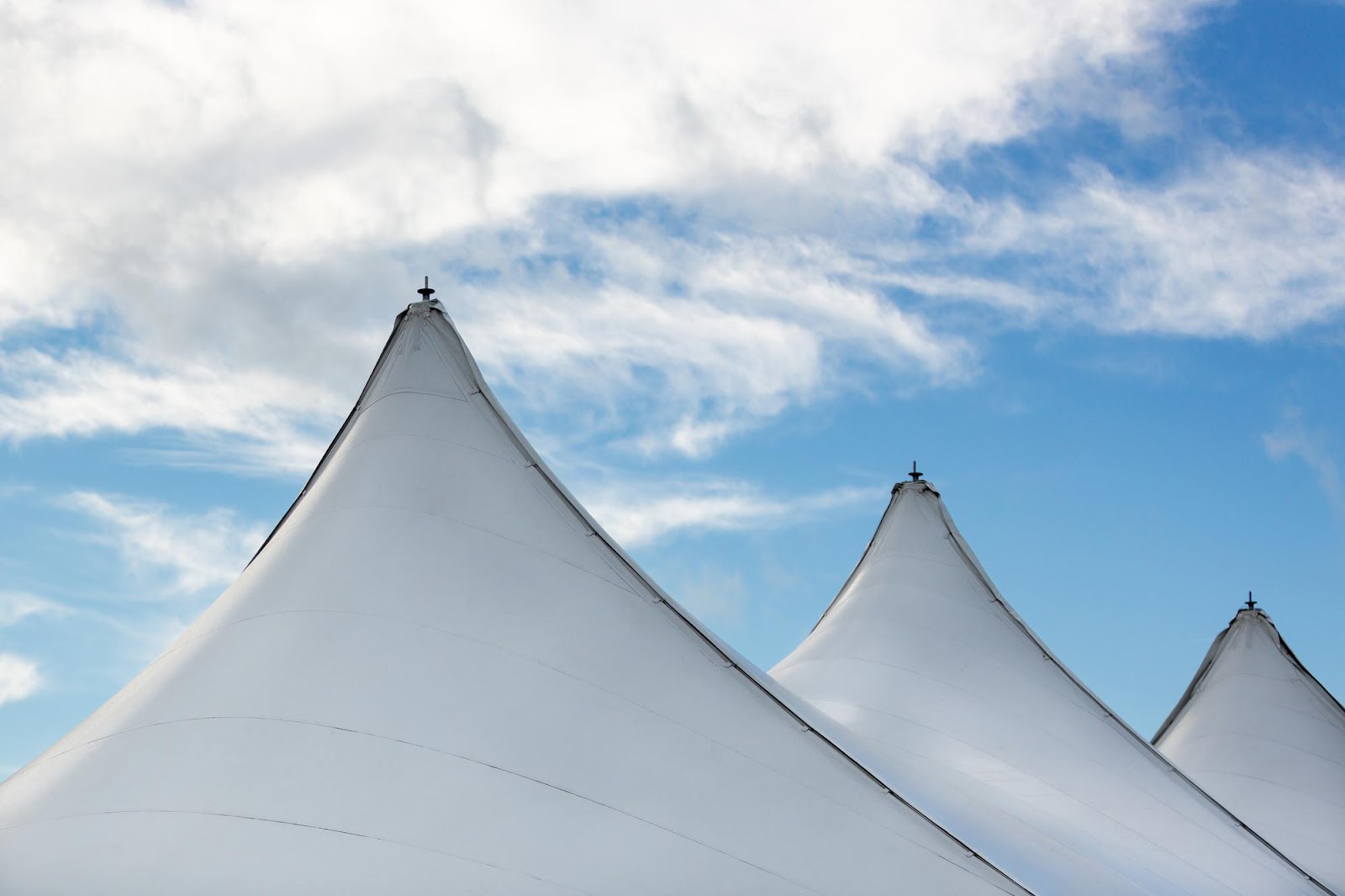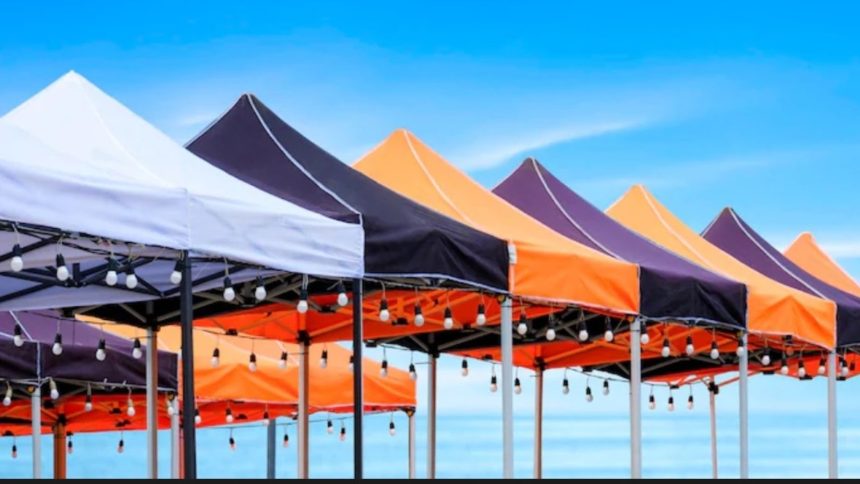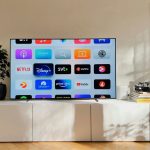Trade shows have evolved from merely showcasing products to becoming immersive brand experiences. Every aspect of a booth’s design, from layout to lighting, is designed to drive audience perception and experience. A custom pop-up canopy has also evolved and now serves a purpose far beyond weather protection. With some proper design thinking and strategic planning, a branded tent can become a marketing mechanism, a storytelling opportunity, and an engagement area to interact with customers. The branded tent, when used intentionally, can become an identity of a brand, creating intrigue, engagement, and value.
Transformative Ways to Make a Branded Tent Stand Out

- Create Visual Identity Through a Custom Tent
A 10×10 custom tent is a meaningful base that provides the opportunity for visual branding within trade show environments. The well-designed small space effectively projects a unified and recognizable company identity through the use of colors, typefaces, and graphics. The design should reflect the values of the brand and communicate a clear message to bring familiarity to the booth.
Thoughtful logo placement, consistent deposition of brand colors, and bright lighting over banners in the booth will improve recall. When attendees navigate toward a unified visual space, they associate that level of consideration with professional characteristics of the brand itself, providing context to the association.
- Design for Engagement, Not Just Display
A product display tent can often become an afterthought. A tent built for engagement—interactive demos, product sampling, or gamified engagement—welcomes participation. An engagement-based display can turn an impromptu visit into a meaningful connection.
Touch screen kiosks, VR demos, or even answering poll questions under the tent can create memorable engagement. The goal is to create an environment that generates curiosity and welcomes active engagement, rather than passive observation, of the brand experience.
- Use Lighting as a Design Element
Lighting has the power to alter the environment and level of attraction associated with a branded tent. Instead of standard lighting, a trader can use thoughtful lighting to highlight certain products, highlight pathways, or create an environment that conveys the tone of their brand. LED strips, spotlights, and ambient lighting can all inspire a good environment. Soft warm tones can suggest comfort and hospitality, while cooler tones can suggest innovation and modernity. And choosing to use energy-efficient lighting can also have an impact on sustainability, which is a growing concern in trade show design.
- Integrate Brand Storytelling Through Design Elements
In addition to visuals, storytelling could also bring an emotional dimension to the booth experience. Every graphic, texture, and prop can act as an element of a story. Whether it is telling the story of a brand’s evolution or illustrating the brand’s impact on customers, storytelling allows you to move beyond static displays to dynamic expressions of the brand.
For example, wall panels could include infographics that tell the story of the brand’s milestones, sustainability efforts, or customer success stories. These aspects create a layered experience that makes an impression longer than the immediate moment, when designed cohesively.
- Prioritize Comfort and Hospitality
A guest’s ability to be comfortable in a tent leads to longer visits and a better chance of meaningful interaction—comfortable seating/benches, sufficient air flow, and intention in the layout just “feel” better. Adding little amenities, like charging stations, water fill stations, or lounge space, increases guest satisfaction. Developing a tent or booth that is inviting to guests cultivates a positive association with a brand and helps create an impression that goes beyond the convention floor.
- Showcase Sustainability and Responsibility
Sustainability has emerged as a major value in modern branding, and trade shows provide an avenue for brands to publicly signal their commitment to that value. Use of recycled materials, biodegradable signage, or reusable booth structures conveys environmental awareness without any words.
Additionally, showcasing sustainability using tent materials and display options shows that the brand is aligned with a wider set of socially and environmentally concerned values. Brands that incorporate sustainability-based elements into their tents can reach more environmentally aware audiences and demonstrate that their brand is both honest and innovative.
- Extend the Experience Beyond the Tent
An excellent branded tent experience does not halt when attendees leave the tent experience; it continues with the subsequent follow-up of the event. QR codes to digital catalogs, interactive screens with newsletter subscriptions to engagements, and social media display walls help to bridge the gap between in-person engagement and digital engagement. Inviting a visitor to geo-tag the brand or snap a picture with a branded hashtag also helped the booth increase online brand exposure and visibility. The booth is a touchpoint to broaden brand awareness long after the event has ended. In this capacity, the tent is a launchpad into the digital space that continues to encourage us to maximize exposure and, more importantly, to move to deeper brand engagement.
End Point
A thoughtfully crafted branded tent can function as so much more than a shelter—it can be a vessel for storytelling, a place for engagement, and an embodiment of brand values. A 10×10 custom tent can capture visual recognition of a structure driven by sustainability to create stylish designs. By honing in on aesthetic attributes, immersive interactive elements, and long-lasting touch points, tent setups accomplish ordinary to extraordinary brand experiences, all while standing out from the rest in a competitive marketplace.
Lynn Martelli is an editor at Readability. She received her MFA in Creative Writing from Antioch University and has worked as an editor for over 10 years. Lynn has edited a wide variety of books, including fiction, non-fiction, memoirs, and more. In her free time, Lynn enjoys reading, writing, and spending time with her family and friends.















